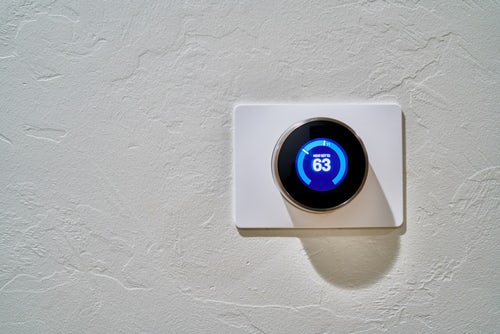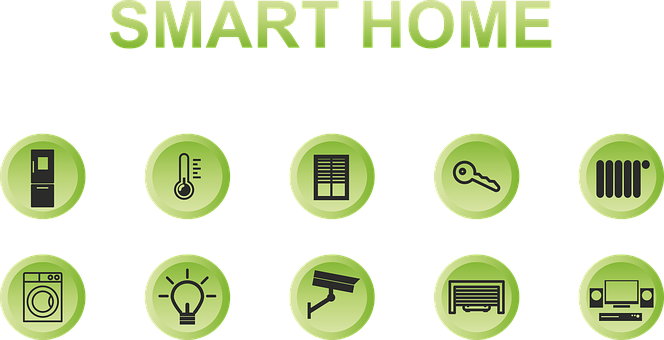From the digital controls on your microwave to the smart home technology that everyone is upgrading to, computers are undoubtedly all around us, with embedded systems in (mostly all of) our appliances. And as the years go by, they’re only going to get smarter, more efficient and potentially more invasive.
And all for good reason, of course!
While a lot of people would be concerned about their privacy, the reality is that much of the data that is collected from these smart new embedded PCs is used to learn how we live our lives and attempt to improve it.
For example, some smart thermostats can “learn” your habits so that they understand what temperature you like during certain times of the year, and there are even AI-powered smart fridges that can accept voice commands and alert you when you’re running low on something.

Of course, that technology is still a little far into the future, but we’re starting to see more and more products that are giving us an early glimpse into a technological-advanced future.
In fact, we could even liken it to our favourite sci-fi shows where we can control our appliances with our voices and virtually every appliance has some kind of embedded screen that we can interact with.
Although smart AI embedded systems are still relatively new and expensive, there are actually a lot of embedded systems that exist today and are used on a very regular basis.
Embedded Systems in Your Appliances
Almost all of our digital appliances use some kind of embedded systems. For instance, if you have a digital microwave then there’s likely some embedded PC system that controls the timers, reads the inputs when you push buttons and even keeps track of times and alarms.
It doesn’t sound like much, but there is a very simple computer in virtually every appliance that we have.
Of course, older appliances like a regular old kettle probably won’t have an embedded system. After all, you just press down a button and it heats up the water, so nothing really happens that would require controlling or monitoring by an embedded PC system.

However, if you ever upgraded to a smart kettle, then you’re going to get a wealth of new features such as temperature-controlled boils, the ability to turn it on without actually being near the kettle and even alerts telling you when the kettle is ready.
These use very small embedded PC systems to process all of the features, and there are small chips in these smart devices which allow them to communicate with your home internet network which gives it smart technology.

As long as your smart appliances have some kind of internet connectivity, they most likely have embedded systems which allow them to communicate with every other device on the network.
This ultimately means that in the future, we’ll be able to control every appliance with our voice, we’ll be able to track usage, energy consumption and even detect when our devices need to be repaired or replaced. With so much information being processed, our appliances are only going to get smarter and we’re going to be more informed about how we use our appliances.
Embedded systems in the home are getting more and more popular thanks to companies like Google and Amazon introducing all kinds of smart home devices that work in tandem with offerings third-party companies. Compatibility will always be a huge issue, but as long as the consumer is given plenty of choices to pick from, it will continue to grow the industry and create more advanced use cases for embedded systems.
Embedded Systems in Vehicles
In the past, cars were mostly mechanic with everything being driven by some kind of lever, switch or pedal. Nowadays, the introduction of electronics into our vehicles has given it far more useful features than we could’ve ever expected.

These embedded screens and PC systems are everywhere now and even budget vehicles will contain at least some kind of embedded system to offer extra comfort, more convenience or even assist the driver.
One great example of an embedded screen and PC system in a car is the introduction of the parking camera. This is essentially a system used to help you park your vehicle by showing you a view from the rear of your car on a screen on your dashboard so you don’t need to look at your side mirrors anymore.
The screen will even predict your position based on your speed and how far you’ve turned the wheel, making it incredibly easy even for beginners to park a vehicle thanks to the embedded systems.
We even have sensors around our cars now that detect objects around us and alert the driver when we’re too close to the sidewalk, if we’re drifting out of our lane or if it detects a danger around us.
These alerts are loud, obvious and help to keep drivers alert when driving. Of course, these embedded systems don’t make up for a driver’s poor skill but they do assist them and make driving a little easier.
The holy grail of embedded systems in vehicles right now is Tesla’s self-driving technology. As a fully electric car, the entire vehicle is one gigantic embedded system that is probably the most advanced piece of technology in any car to date. With its many sensors, cameras and the impressive software, the embedded PC system can control virtually everything about the car, driving it safely to your destination, helping you park and essentially doing everything for you.

Tesla is continuing to improve their self-driving system and sooner or later, we might even see driver less cars that transport cargo or even passengers around cities.
Some final words
Embedded PC systems are becoming more and more popular thanks to consumer demand for smarter products. With almost every appliance; car and electronic devices contain some kind of small PC inside of it, it’s clear that computers are all around us. They will certainly continue to grow smarter with each new product that is released on the market.
Do you know how many embedded systems are in your home?
